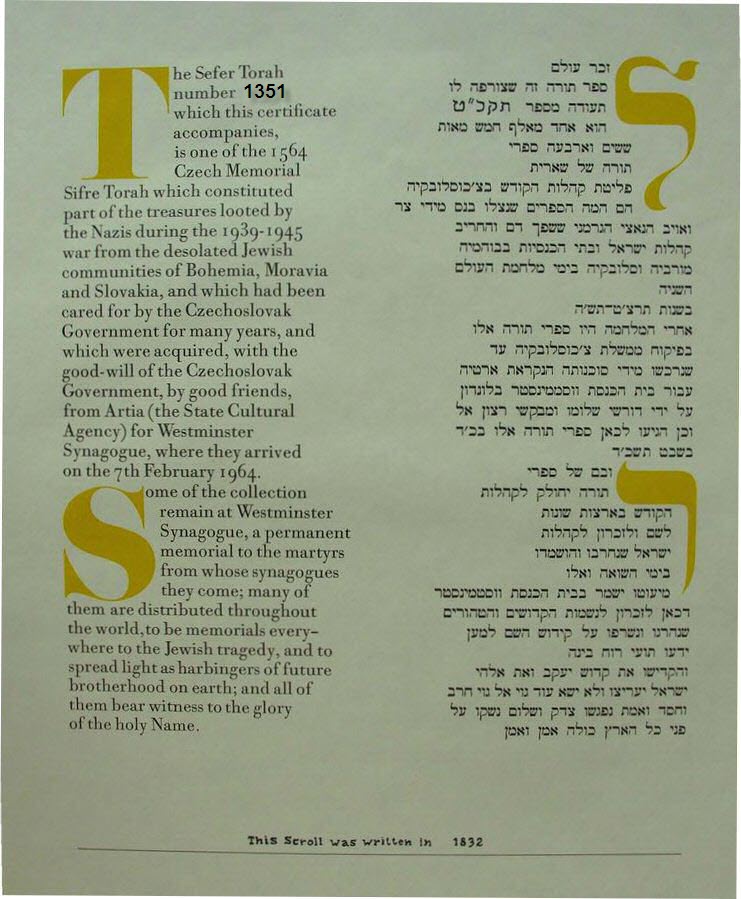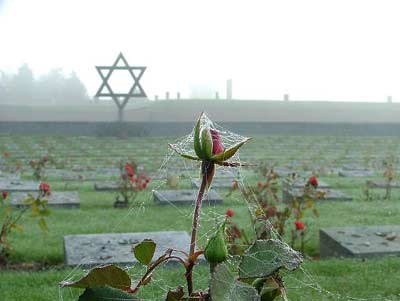Holocaust Torah
We are priviledged to have Torah MTS #1351 from Kutna Hora. This Sefer Torah was “loaned” to Temple Beth Kodesh by the Memorial Scrolls Trust in England.


The Kutna Hora Synagogue
Kutna Hora (German: Kuttenburg) is about one hour east of Prague, Czechoslovakia. Kutna Hora is the district court seat. Jews were barred from living in this silver mining town from 1568-1848. The surviving synagogue, at ul. Smiskova 619, was built in 1902 in Art Nouveau style. During World War II the Nazis deported the town’s Jews to Terezin (German: Theresienstadt); few survived. During the war, the synagogue was used as a pipe organ factory. Since 1947 it has been used by the Hussite Church. Most of the Judaic decorative elements have been removed. Note the Jewish Star at the top of the building. In 1930, there were 130 Jews living in Kutna Hora.

Torah Cover Designers Abby Radwin, Sheila Seras and Irwin Ferman
See the article in the South Florida Sun-Sentinel

Certificate from the Memorial Scrolls Trust

Kutna Hora Holocaust Memorial

Kutna Hora Memorial Stone

Terezín is an 18th century walled fortress beside the Ohře River north of Prague. In WWII it became a Jewish ghetto and prison; better known abroad by its old German name; Theresienstadt. Of the vast majority of the 140,000 Czech Jews who were taken to Terezin, 97,297 died among whom were 15,000 children. Only 132 of those children were known to have survived. Roughly 33,000 Jews died in Theresienstadt itself.
In the town of Terezin, the population had normally been around 5,000 people before the war. At the height of the war, the Ghetto/Concentration Camp Terezin held over 55,000 Jews. Thousands died of malnutrition, disease and exposure. Their bodies were cremated at the small crematorium with its four gas ovens.
Terezin was not a death camp, by the usual definition. There is no way to compare Terezin to Auschwitz-Birkenau or Treblinka or any of the other death camps where hundreds of thousands were gassed or murdered in other ways each year.
The elderly and families were brought in large numbers to Terezin. Then, in large groups, they were transported to the east, to Auschwitz-Birkenau, when it was fully operational in late 1942. There, the elderly were sent immediately to the gas chambers while the younger inmates who could still work, were temporarily spared.
Dagmar Lieblova, although in her 80s, is a tireless lecturer at the Terezin (Theresienstadt) Memorial. She meets and conducts classes with Czech, Austrian and German, as well as British and Americans students. Equally at home in three languages, Dr. Lieblova, a sprightly grandmother with a ready smile, shares with these teenagers stories of her own teenage years–when she and her family were uprooted from their comfortable home in a small town near Prague, and sent to Terezin. When Dr. Lieblova tells them, “Things were not so bad in Terezin– compared to what I went through next,” they can only imagine what she’s about to tell them.
Working closely with Centropa on this film about her life, Dr. Lieblova shared with us scores of old family pictures. One of her primary motives for making this film was to pay tribute to Fanyka, the family cook, who not only raised Dr. Lieblova, but nursed her back to health after the war, and then went on to raise her children, too.
You can get to know about our work by visiting www.centropa.org

